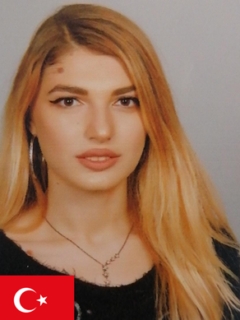Hilal Özyurt
Hilal Özyurt
Gaststudentin (Istanbul Technical University, Turkey)
Topic: Bioactive composite scaffolds by two methods for bone tissue engineering
Betreuer*in: Dr. Qaisar Nawaz, Dr. Irem Unalan, Prof. Aldo R. Boccaccini
3D porous scaffolds are used to mimic bone structure and promote cell attachment and tissue regeneration. Bioactive glasses can be used to fabricate 3D scaffolds with technologies such as foam replica method, 3D printing or MEW (Melt Electrowriting). Bioactive glasses exhibit excellent osteoconductivity and bioactivity, controllable biodegradability and the ability to release biologically active ions. The methods used for characterization can be listed as FE-SEM, EDX, XRD, TEM, ion release, BET, FTIR, in-vitro tests, antibacterial tests, toxicology, and biocompatibility tests. During this internship, 45S5 bioactive glass scaffolds will be fabricated first using foam replica technique. The fabrication process for 45S5 bioactive glass scaffold involves three steps: preparing the slurry, creating the green body, and sintering. Subsequently, these scaffolds will be coated using mesoporous bioactive glass nanoparticles, which are prepared using a microemulsion-assisted sol-gel process. In the second part of the internship MEW will be used to obtaing novel PCL-bioactive glass composite scaffolds, which will be compared with foam replica scaffolds in terms of bioactivity.

